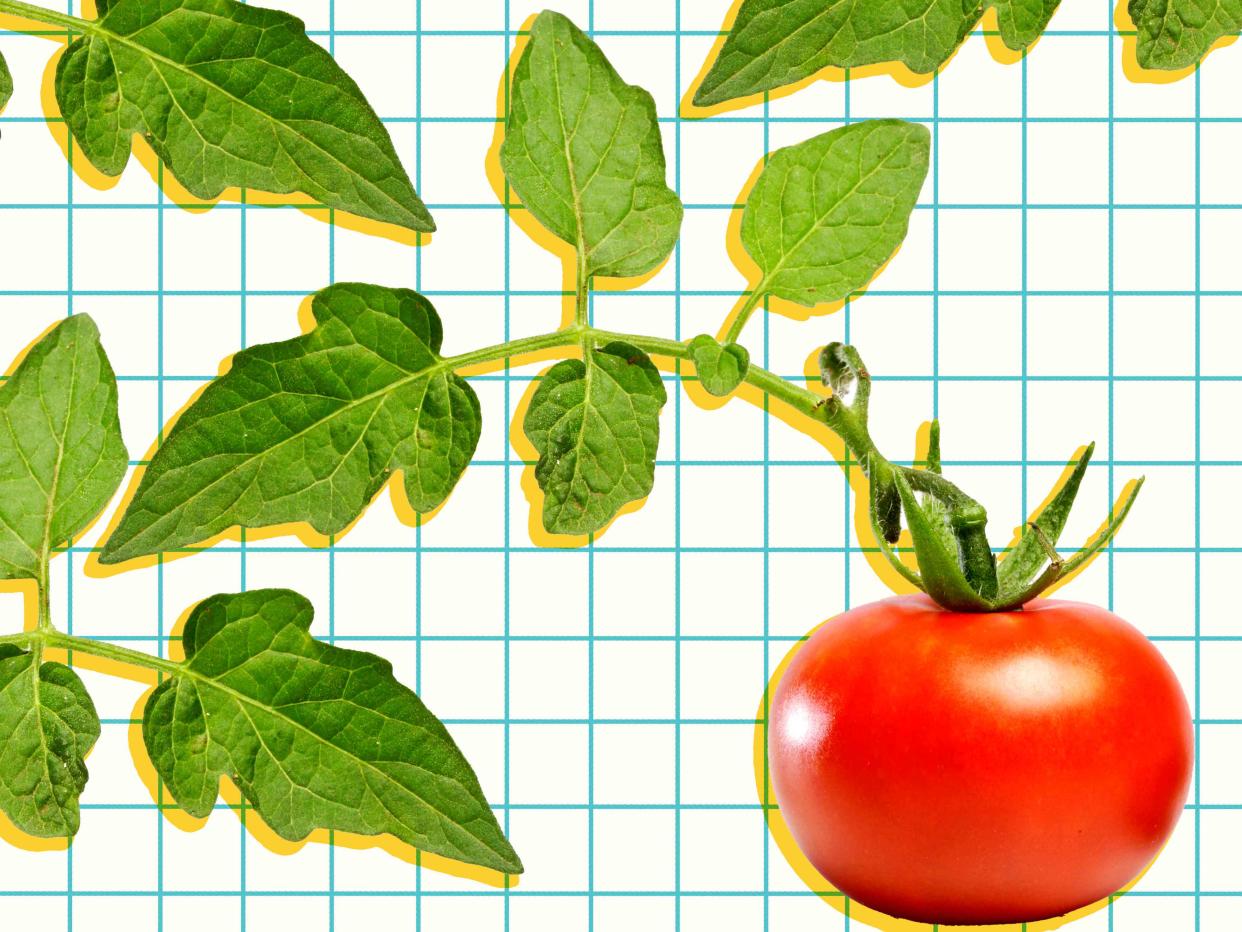Stop Throwing Away the One Ingredient That'll Make Your Tomato Sauces Even Tomato-ier
Please! Stop it!

Getty Images / DEV IMAGES
I have been swimming in homegrown basil for about four months now. Name a way to use basil. Any way! I have, in moments of desperation, done that and more with all the basil I cannot seem to stop growing. Suffice it to say, I have had my fill of basil and thus have been looking for an exciting change of pace in the seasoning department.
So, in an attempt to add spice (and, like, other herbs) to my life recently, I pulled up Daniel’s fresh tomato sauce recipe from 2014. In it, he concedes that while basil is the easiest and most impactful herb to throw into the sauce to infuse freshness, tomato leaves are an option for imparting a different kind of freshness and a more robust tomato flavor.
Daniel quotes Harold McGee from his seminal book On Food and Cooking as a jumping off point for the experiment: "Tomato leaves have a fresh-tomato aroma thanks to their leaf enzymes and prominent aromatic oil glands." That sounded so nice (and reminded me: Loewe has a new-ish $80 tomato leaves soap I have been meaning to add to my “things no one can ever justify purchasing” wish lists. Maybe I can convince my husband to think about it for Hanukkah 2027!!??!) ! I grew very excited to try a different take on my go-to tomato sauce.
Why (and How) to Use Tomato Leaves
Firstly, adding tomato leaves where you’d otherwise think to only use basil is an easy way to mitigate waste. Secondly, they are aromatic as hell! Hence the $80 soap-ification!!
In order to try Daniel’s swap-in suggestion, on a gorgeous August weekend, I headed to Alstede Farms in Chester, NJ, to get my hands on some tomatoes and their leaves. As Daniel mentions in his original recipe, it’s not exactly easy to find tomatoes sold with their leaves, though if you happen to be growing tomatoes at home alongside all that basil, it's a cinch. At Alstede, I had to go past the farmstand section on the farm itself and up into the pick-your-own fields to make it happen. (Farmers and farm reps there told me the majority of people who come through excited about their Jersey-fresh tomatoes aren’t interested in the accompanying leaves.)
I left with a small batch of tomatoes-with-leaves in hand, and almost immediately threw about a cup’s worth into a batch of simmering sauce at home. Wouldn’t you know it, Daniel was right! They did indeed add a grassy, green flavor to the undertaking. My batch didn’t yield the anise-yness he’d mentioned, but there was a distinct freshness that none of my homegrown basil had provided yet this summer. And while I appreciated the new, bright earthiness, I probably would simmer a smaller batch of leaves (maybe a half-cup?) in there next time for a slight hit of it, rather than a full blast. I’d then throw whatever is left into some pico de gallo.
Why Don’t People Do This!?
Besides the aforementioned availability issue, there is a common skepticism about cooking with tomato leaves, stemming from a long-held belief that they are unhealthy or even poisonous. McGee wrote about this for the New York Times back in 2009, noting the wariness around tomato leaves isn’t entirely unfounded: “[They belong] to the disreputable nightshade family, whose members accumulate toxic alkaloids. For centuries after the Spanish first took the tomato from Mexico to Europe, fruit and plant alike were considered dangerous.”
That said, these toxic alkaloids (solanine and tomatine, to be specific), are only of concern when ingested in large quantities. In fact, there are proven benefits to ingesting small quantities of the latter—McGee points to a 2000 study by the DOA’s Dr. Mendel Friedman that showed tomatine “apparently binds to cholesterol in the digestive system, and the combination is excreted ridding the body of both alkaloid and cholesterol. The researchers found that both tomatine-rich green tomatoes and purified tomatine lowered the levels of undesirable LDL cholesterol in animals.” A 2021 study published in the NCBI further pointed to tomatine’s “potential multiple health benefits against infections,” noting tomato leaves possess the most tomatine of any part of the plant.
All this to say: People may not know they can (1) find tomato leaves, (2) eat tomato leaves, and/or (3) add a bit of (safe-in-doses) freshness to the things they’re likely already making with these tomato leaves. But they can and they should! Or they can send me some dumb hand soap I really inexplicably want. That’s a fun way to branch out too!
Happy tomato leaf-buying!
Read the original article on Serious Eats.
